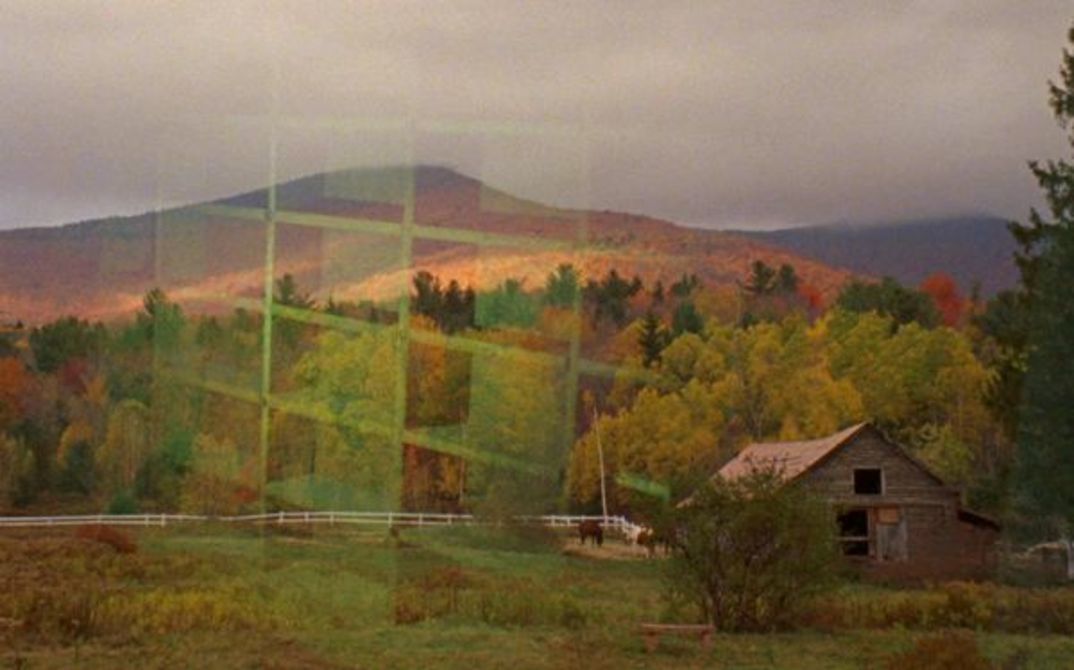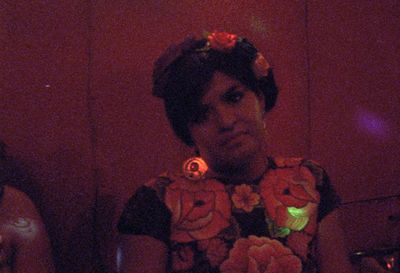
Deborah Stratman is an artist and filmmaker who has worked on both celluloid and video. Her last feature-length work THE ILLINOIS PARABLESwas shot on 16mm and was shown at last year’s Forum Expanded.
Numerous titles at this year’s Forum and Forum Expanded programmes also work with film, primarily 16mm. These include Ann Carolin Renninger's and René Frölke’s AUS EINEM JAHR DER NICHTEREIGNISSE (FROM A YEAR OF NON-EVENTS), Daniel Borgmann’s AT ELSKE PIA (LOVING PIA), EL MAR LA MARby Joshua Bonnetta and J.P. Sniadecki, CASA ROSHELLby Camila José Donoso, GOLDEN EXITSby Alex Ross Perry, AAPOTHKALIN TRIKALIKA (THE KALI OF EMERGENCY)by Ashish Avikunthak as well as short films by Peter Miller, Tomonari Nishikawa, Fern Silva, Anja Dornieden and Juan David González Monroy, Chris Gehman, Duncan Campbell and Bernd Lützeler.
I’ve been asked to talk about film, not moving images in general, but the photomechanical invention of the late nineteenth century.
We think of such things as belonging to the past, but an anachronism belongs to any period otherthan that in which it exists, which could just as well be the future. As an artist already invested in making artwork vis-à-vis manipulating time, it’s appealing to compound that impulse by working in a medium slightly transplanted from its native era. We call ourselves filmmakers, but maybe timemaker would be more appropriate. Of course there are artists today who are, quite literally speaking, filmmakers. They mix up their own emulsions and paint them onto perforated plastic strips, which get loaded into intermittently moving machines and exposed to light, then hand-processed in buckets and tanks. I don’t personally work this way, but admire many artists who do; the way they remove themselves from the labs and print stock companies which the rest of us must contend with. Like living off grid, their self-reliance harbors an anarchic urge to divest from corporate infrastructures. Add to that the magic of chemistry, and they’re the envy of any alchemist who ever sought to transmutate forms.
To work and think in a medium alienated from its own era makes me think of Darko Suvin’s 1968 formula for science fiction, when he declared cognition and estrangement to be the genre’s necessary and sufficient conditions. Perhaps the anachronistic task of composing with 16mm partially explains the interest of so many contemporary film artists with science fiction, and the work of JG Ballard and Robert Smithson. I admit they’re important touchstones for myself as well. Octavia Butler, Johanna Russ, Samuel Delaney, James Tiptree Jr., Edwin Abbot Abbot, JH Rosny aîné – these writers critique contemporary conditions (social, economic, environmental) by transposing the setting of a story to a vaguely familiar or abstracted non-present.
I don’t choose to shoot on film because of the medium’s predisposition towards sci-fi, though that’s a symptom I don’t mind. Compared to many filmmakers, I lack commitment to the medium. I love celluloid. But I’m not devotional. I have shot on VHS, Hi-8, MiniDV and HD as often as I’ve shot using an Aaton or CP16 or Bolex. Not only does each different camera have its own peculiar ergonomics – a weight on the shoulder or a balance in the hand that produces a unique cadence of shooting – but each medium does too. To me, the varying speeds at which the process unfolds are seductive. I find film to be deliriously slow. A slow to get lost in. A slow that takes me to planes of figuring and reverie that diverge from digital methods, which are faster, more improvisational, spry, almost conversational.
Quite a few artists shoot analogue and post-produce digitally, but what it means to work in film can stretch beyond capture. We might also edit mechanically, using rewinds, or a flatbed. I suffer less eyestrain sitting in front of a screen that’s rear illuminated by light passing through transparencies and bouncing off a mirror than I do staring at a computer monitor. I like the heat and sound and pulse of the Steenbeck. I like having lengths of film dangling off hooks into a bin. The spatiotemporal becomes so concrete. But I can’t stand cutting sound on magnetic film. It’s awful to work with only two tracks. I do transfer a bit of audio to mag just to have something to sketch with, but I properly massage the soundtrack into existence using software.
There’s a kind of longing that lies in the world of touch; an intelligence of the hand, of repetition, in the suite of gestures that joins these plastic bits. I don’t attach value judgments to the discrete labor of guillotining and taping, versus typing commands into a keyboard. I just ascribe difference. In the end, the automatism of process, analog or digital, embeds itself into the final work and becomes as much a part of the film’s genetics as shadow or rhythm or color or plot. Part of the reason I alternate between mediums is to bring about a diversification of filmic species. Sometimes the urge is reactionary, just to work against a process I’ve been subsumed by and am weary of. Other times the switch is about de-skilling. I choose a method I’m naive about. I’m with Emerson when he says we like to be settled, but it’s only as far as we’re unsettled that there’s any hope for us. Or Georges Perec, who insists we question the habitual.
When you look celluloid up in the dictionary, you get “a transparent flammable plastic” which may go further to explaining my attraction to it than anything else I can think of, as there’s always been an unintentional but marked predilection for combustion in my cinema.
And what else can film bring us? Well for one, imperfection. Imperfection and absence. The very conditions of desire. Formed by an irregular swarm of grain, filmic images are constitutionally atmospheric. They breathe. Aerated by millions of irresolute points, film magnetizes our gaze, which is evolutionarily disposed to dart towards movement. Film brings intermittence. By way of the sewing machine, we get the beautiful Maltese cross mechanism, which translates continuous motion into one of periodic stops and starts. Cinema gives us gaps, it remembers through subtraction.
In ancient Greek, chronos was time flowing past, kairos the time between, the pregnant pause, the time with potential. The Japanese term Ma also describes a pause, or negative space, the interval between structural parts, emptiness. Ma isn’t created by compositional elements, it’s the thing we do in our heads when confronted with the no-thing between. Equal to what is, the usefulness of what is not. An interval without expectation is no interval at all. The Ma is the thing.
There are the intervals of time that come before and after a scene, or the volumes of space outside of the frame, which charge it, animate it – the wind in Botticelli’s Venus. Or if you take the interval between the very first and final frames of a shot, the distance between those two ends can be what sets the shot humming, like two notes of a chord, or nodes of a standing wave. In string theory, it’s the frequency of vibration that determines a particle’s charge and mass.
Some of these phenomena are nonspecifically cinematic of course. We can register digital intervals as readily as analog. But there’s a kind of elemental witness that’s endemic to film. The passage a strip of emulsion makes, out of its can, into a camera, its silver halide crystals materially altered by the light that touches it – that is pilgrimage. The exposure is physically embedded. There’s no shortcut around this act of silent witness, and in this sense, filming on film is stubbornly material, resolutely local and uniquely political.
The artist would like to thank Pat O’Neil, Nathaniel Dorsky, Charles Stankievech, Emily Wardill, Ben Rivers, Lucy Raven and Mike Gibisser, whose thoughts on film and the interval have stayed with her.
